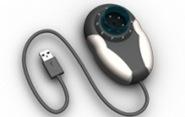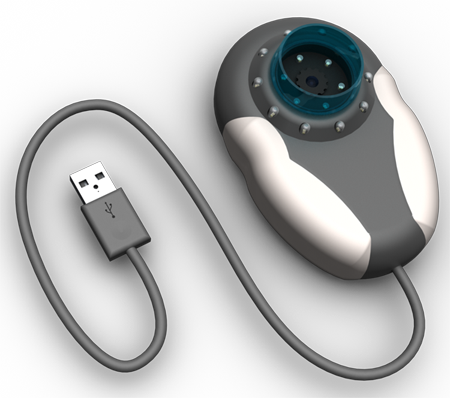Three Yale Engineering Undergrads Win $100,000 CIMIT Prize for Skin Imaging Device

Elizabeth Asai came to Yale to prepare herself for a career in “meaningful science,” and never imagined she’d fulfill that calling in a technology startup. Then she met classmates Nick Demas and Elliot Swart, two budding entrepreneurs. Now, with two years until graduation, the three engineering majors are business partners with a prizewinning prototype and financial backing.
The team of Yale rising juniors beat out engineering graduate and undergraduate students from around the country to win $100,000 in a national competition to create novel technology for improved healthcare delivery. They won the prize for their development of an early melanoma detection device called a "Stereoscopic Plug-and-Play Dermatoscope and Web Interface." Their small, user-friendly, low-cost camera can be used by a doctor or patient to capture and upload 3D pictures to a web-based directory that dermatologists can access to remotely analyze and monitor the topography and volume changes of skin moles.
 Hosted by the Center for Integration of Medicine and Innovative Technology in Boston, the CIMIT Prize for Primary Healthcare competition encourages engineering students to develop technological innovations that have potential to enhance patient care at the initial point of contact with the healthcare system.
Hosted by the Center for Integration of Medicine and Innovative Technology in Boston, the CIMIT Prize for Primary Healthcare competition encourages engineering students to develop technological innovations that have potential to enhance patient care at the initial point of contact with the healthcare system.
Asai, Demas, and Swart, who met as freshmen in Morse College and collaborated as sophomores to engineer a laparoscopic surgical probe, said the idea for a mole scanner came to them during a late-night conversation. They wondered how the 3D visualization employed by their surgical probe could be useful to a technology that would qualify for entry to the CIMIT contest.
Once the concept was hatched, the team jumped into action. Dedicating 20-30 hours a week to the project, the three worked independently of any Yale engineering courses. They developed the prototype in their dorm rooms, used the Engineering School’s 3D printing facility to fabricate its ergonomic plastic parts, conducted a clinical study at Yale Dermatology Associates, and filed a provisional patent for the device.
“I got to see an idea jump off the paper and into real dermatologists’ hands in less than four months,” said Asai, who served as principal investigator for the project's clinical study. The experience taught her to “never underestimate what can be done in a very short time, especially when you have the right people backing you up,” she said.
Demas, a mechanical engineering major and the project’s chief designer, said, “At first, we didn't even know there was a need for such an instrument. But during clinical trials it became readily apparent that the doctors and patients could benefit from this technology.”
The team credited Suguru Imaeda, Director of Yale Dermatology, with expediting the study. “His excitement about our project was incredibly encouraging,” said Asai. “In addition to helping us set up our initial trials, Dr. Imaeda recruited three other Yale dermatologists. The time they donated to help a few undergraduates was remarkable. With them we were able to image lesions of 50 patients in a clinic setting. We might be in contention for the fastest clinical study ever performed, and that is largely due to the work of these four doctors.”
Asked if any of their Yale engineering coursework contributed to their success, Swart, an electrical engineering and computer science major who masterminded the programming of the imaging device, said Professor John Morrell’s Mechatronics class gave him “both the practical circuit design and MATLAB skill necessary to complete this project.” Demas added, “Computing for Scientists and Engineers helped with some of the onboard microcontroller software.”
After being selected as one of 10 finalists in the competition, the team finished the school year and then put in three weeks of 15-hour days to meet CIMIT's May 31 deadline. Now, with the $100,000 prize money in hand, Swart said they’ll try to move from experimental prototype to mass-producible device, while enhancing the reliability and quality of results to meet doctors’ needs.
Has the experience, whet anyone’s appetite for a career in technology startups? “Sure!” said Demas. “I’ve always thought about starting my own business and being my own boss, and this experience has really solidified that interest.” Swart, a native of Silicon Valley, added, “Like 90 percent of my friends from home, I’ve always wanted to have the startup experience. This contest really showed me how much hard work, smart teammates, and a little bit of money can achieve. I really can’t wait to try my hand at a startup.”
For now, though, the group is staying focused on perfecting their Dermascope. "We're trying with seed funding to get to the next stage of development on our own," said Swart. "We'd like to do more testing before we look for investors."
Watch a video of the team describing the Stereoscopic Plug-and-Play Dermatoscope and Web Interface.

